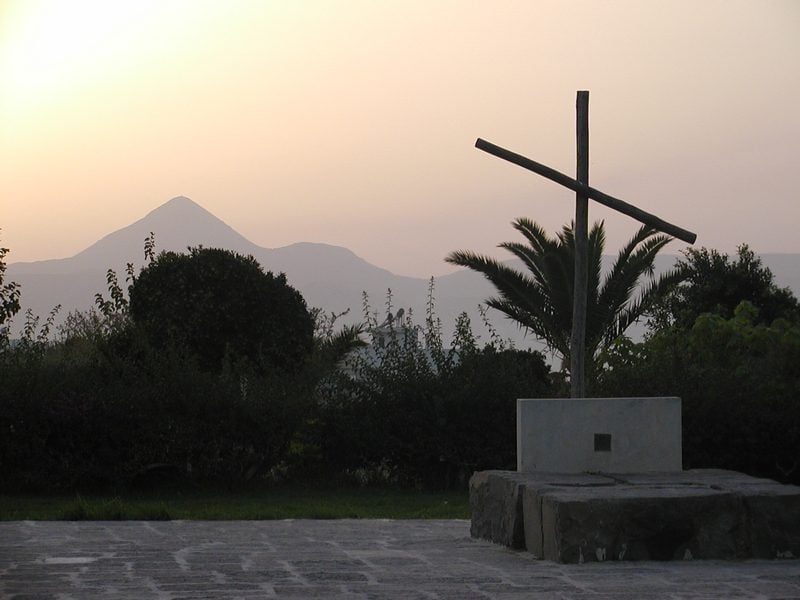
The grave of one of Greece’s most famous and best-loved authors, Nikos Kazantzakis was vandalized by as of yet unidentified persons.
The wooden cross on the tomb, situated on the Martinengo Bastion within the walls of his hometown, Heraklion, on the island of Crete, was broken by the vandals.
Katerina Zografistou, the president of the Greece Branch and a member of the Coordinating Committee of the International Society of Friends of Nikos Kazantzakis has expressed her sadness and disappointment regarding the act of vandalism.
Nikos Kazantzakis’s grave Vandalized
ΝΤΡΟΠΗ! Δεν υπάρχουν λόγια για αυτή την ενέργεια. Δεν είναι όμως η πρώτη φορά που ο τάφος του Καζαντζάκη δέχεται βανδαλισμό. Ο Δήμος Ηρακλείου τι μέτρα προστασίας θα λάβει επιτέλους? #Κρήτη #Καζαντζάκης #Ηράκλειο https://t.co/BJUVjH14jA
— Manos_Londinium (@ManosLondinium) August 2, 2023
“The vandalism of the cross on Nikos Kazantzakis’ tomb is not only an offense to the memory of a great Greek writer, but it also exhibits disrespect towards our culture,” said Zografistou in a statement issued to Amna.
“Respecting our monuments is not just a choice but our obligation; otherwise, we do not deserve to have renowned writers or monuments,” she continued.
Aristea Plevri, the vice mayor of culture of Heraklion, provided reassurance that the municipality’s technical service would promptly restore the damage incurred by the tomb.
On a daily basis, numerous visitors express their respects to Kazantzakis, the renowned author of Zorba the Greek, by visiting his grave.
The motivations behind the vandalism remain unknown at this time, and police are conducting an investigation to identify the culprits.
The author
The famous Greek writer and poet, Nikos Kazantzakis was born on February 18, 1883, and died on October 26, 1957. He became globally known after the 1964 release of the film, Zorba the Greek, based on his novel. He gained renewed fame in 1988 with the adaptation of his book The Last Temptation of Christ by Martin Scorsese.
Kazantakis was born in Heraklion, Crete, Greece. In 1902 he moved to Athens to study Law and in 1907 he went to Paris to study philosophy. In 1906 he wrote his first narrative, Serpent and Lily, which he signed with the pen name Karma Nirvami.
His most famous novels are, Zorba the Greek (1946), Christ Recrucified (1948), Freedom and Death (1950), The Last Temptation of Christ (1951); and Report to Greco (1961), which contains both autobiographical and fictional elements.
However, Kazantzakis believed that The Odyssey: A Modern Sequel, an epic poem of 33,333 verses, was his most important work. He rewrote it seven times before publishing it in 1938. According to another famous Greek author, Pantelis Prevelakis, “It has been a superhuman effort to record his immense spiritual experience.”
Although Kazantzakis was a religious man and the figure of Jesus was ever-present in his works, the Church of Greece condemned his novel, The Last Temptation of Christ, which was also included in the index of prohibited books of the Roman Catholic Church.
He died of leukemia, in 1957, at the age of 74. He is buried in the wall surrounding the city of Heraklion near the Chania Gate, as the Greek Orthodox Church prohibited his burial in a cemetery. His epitaph reads the famous quote “I hope for nothing. I fear nothing. I am free.”